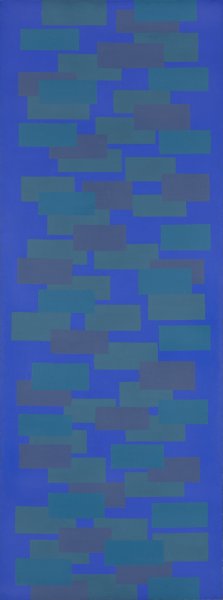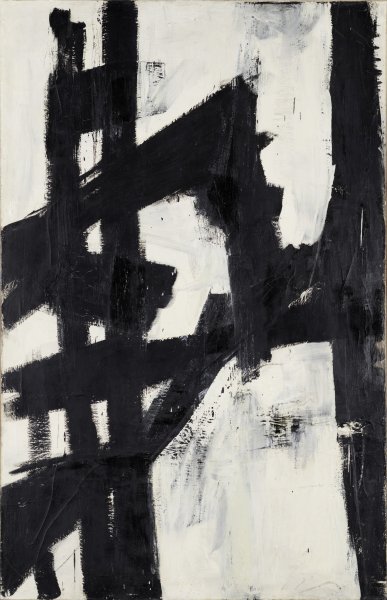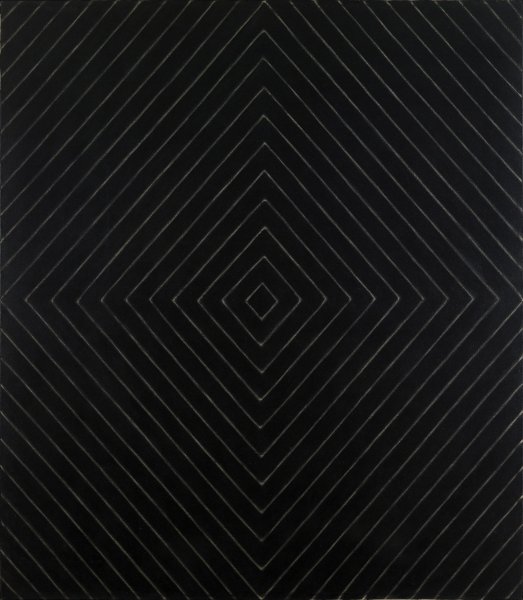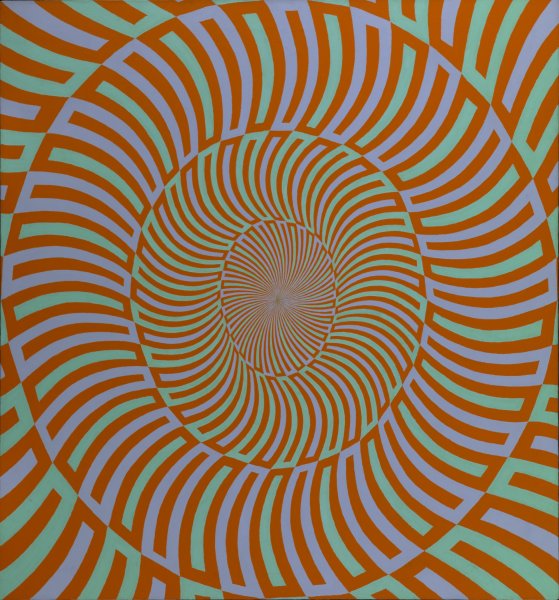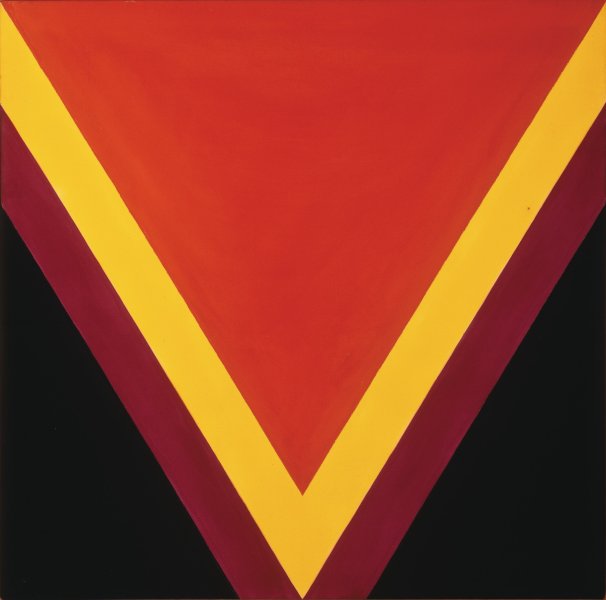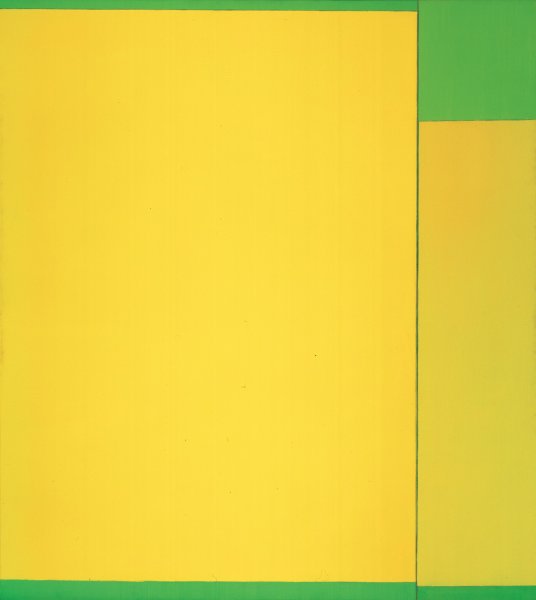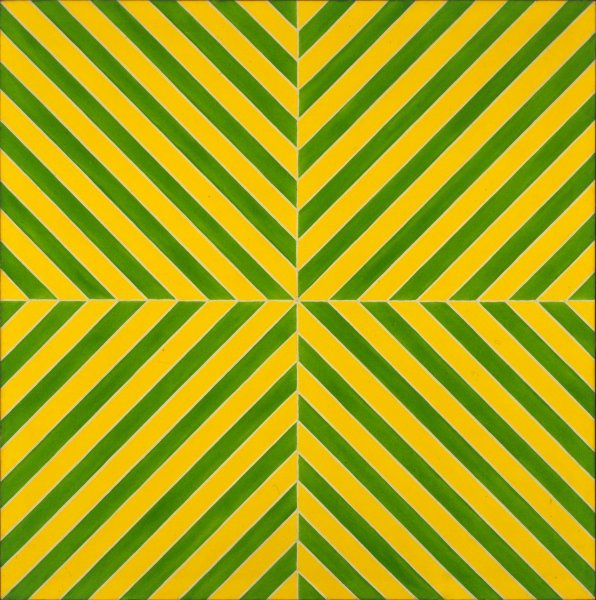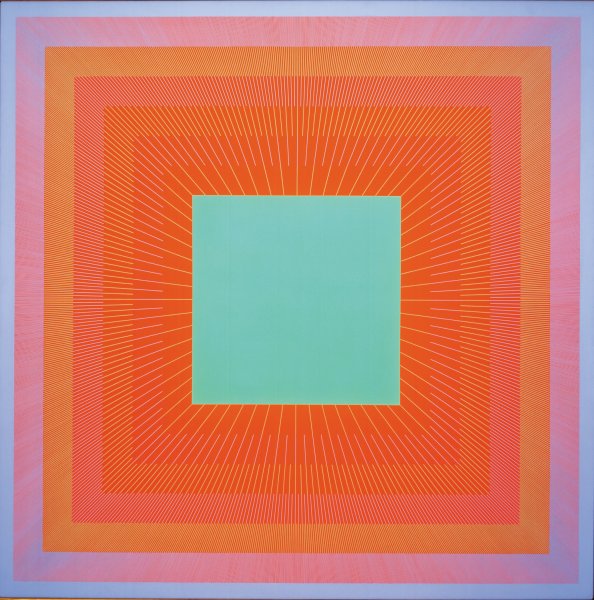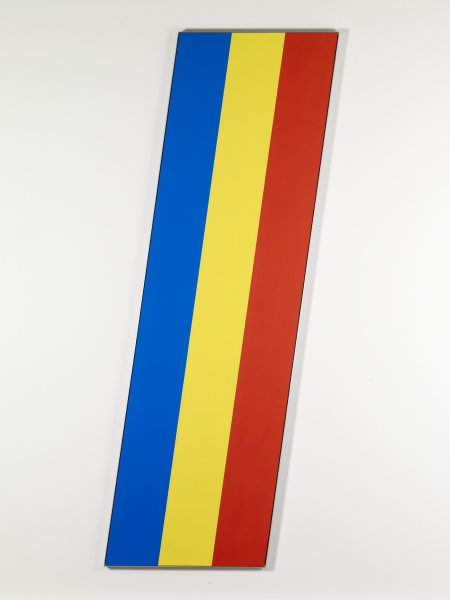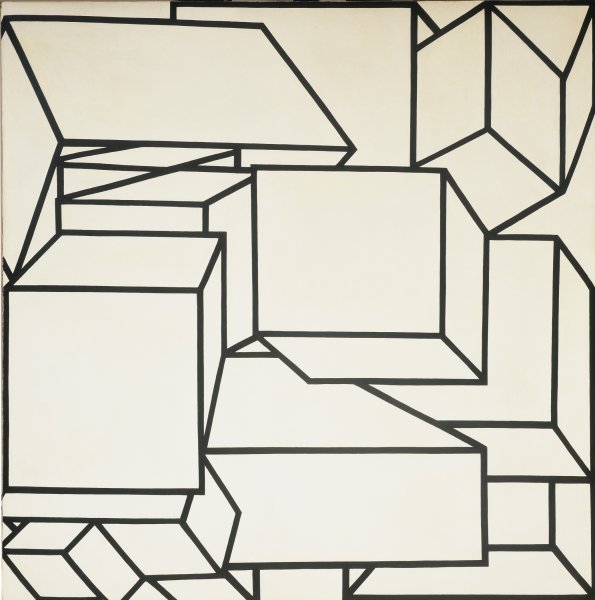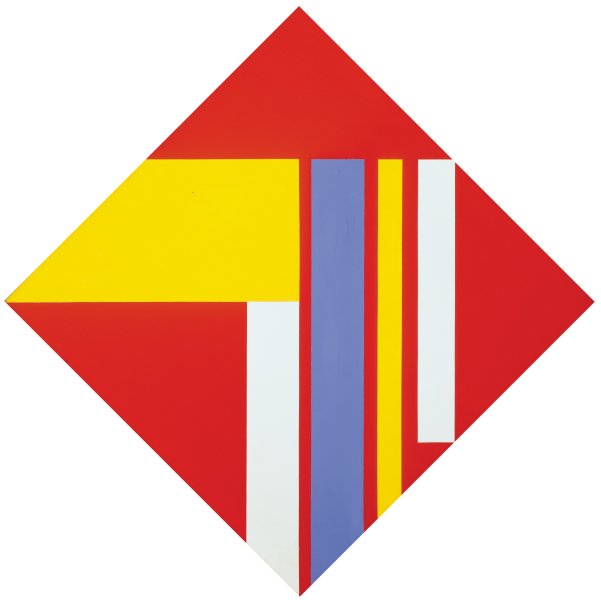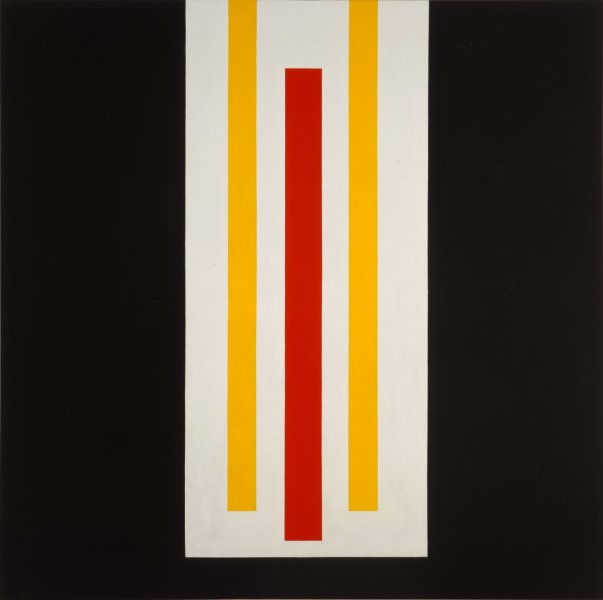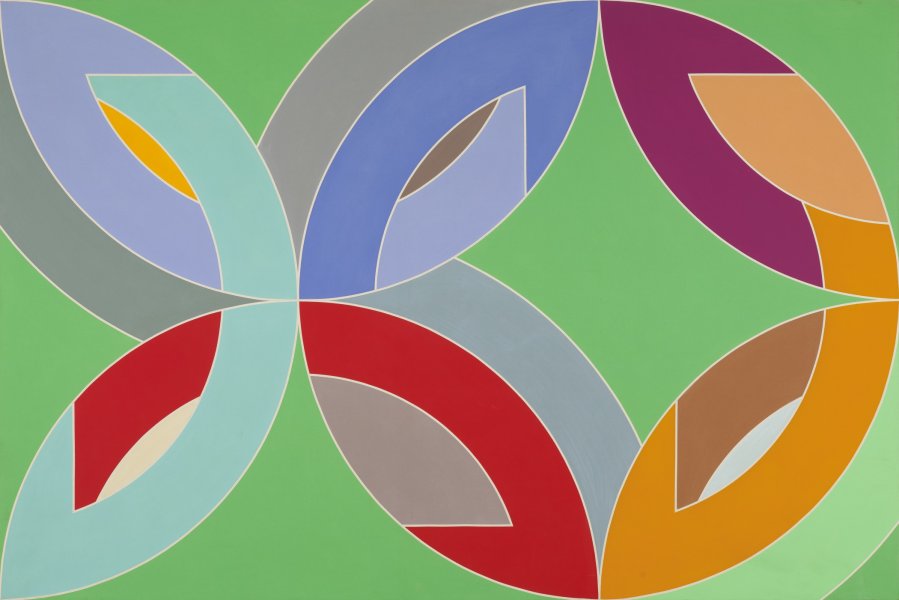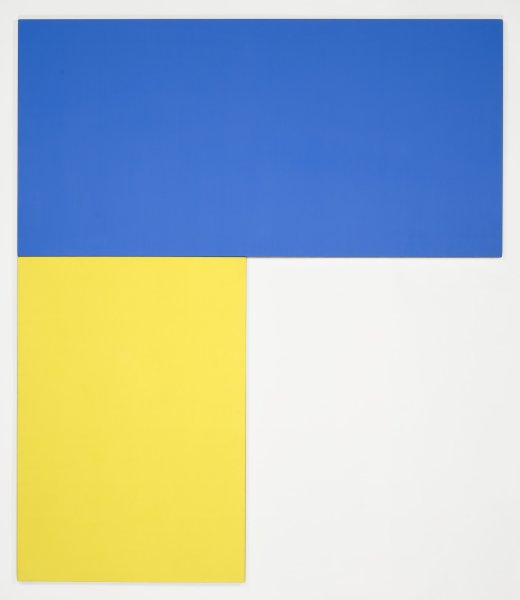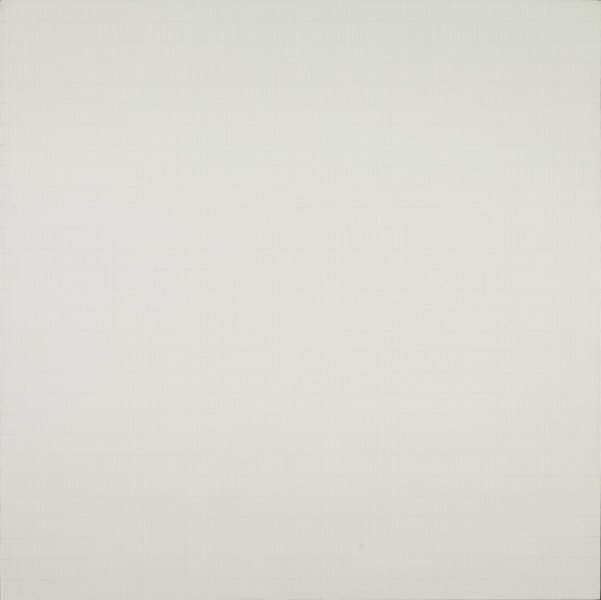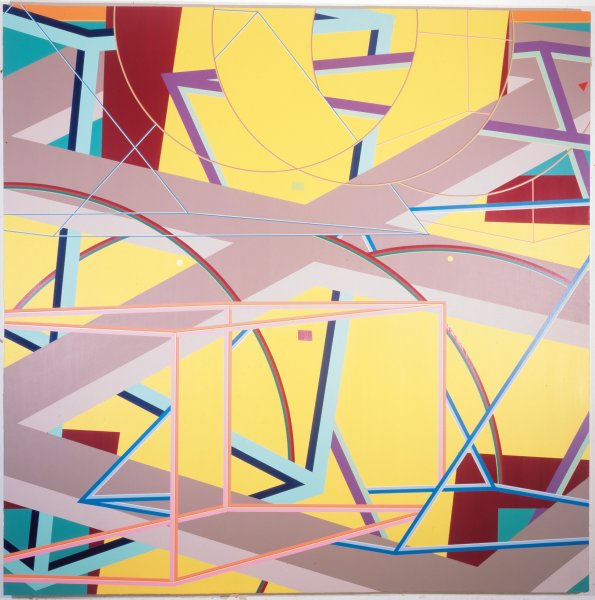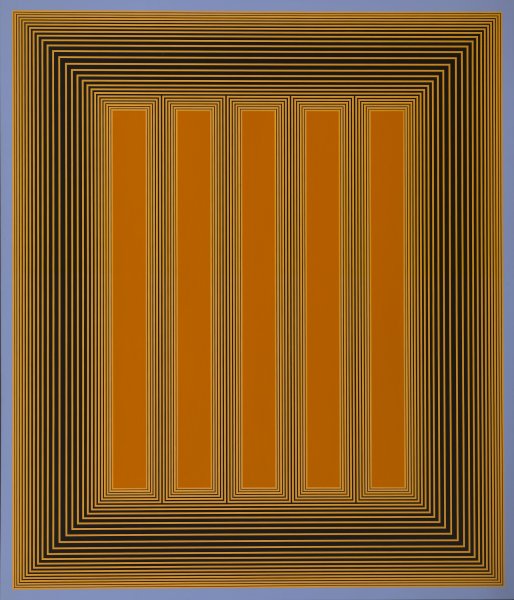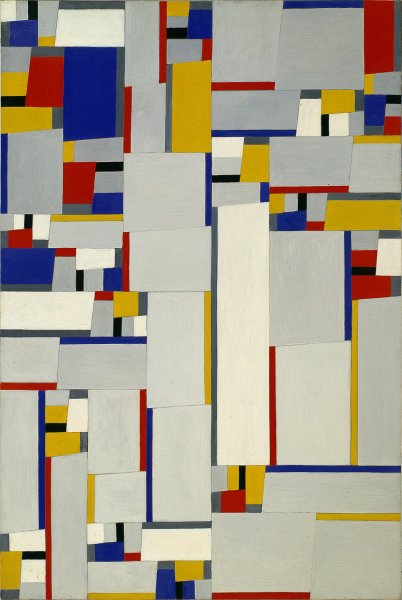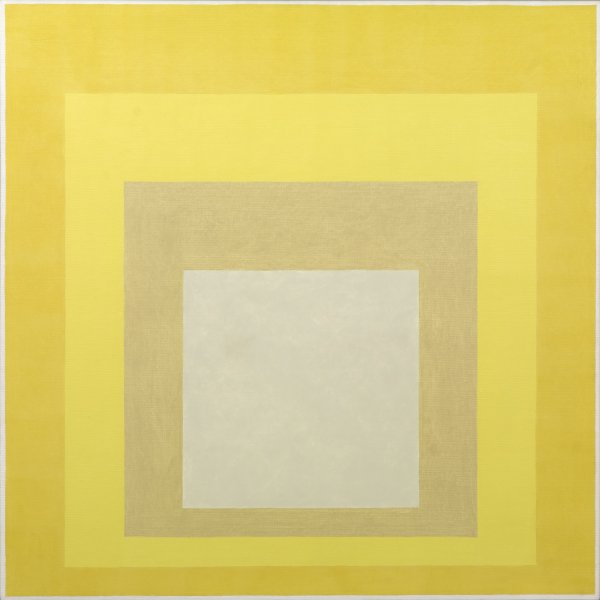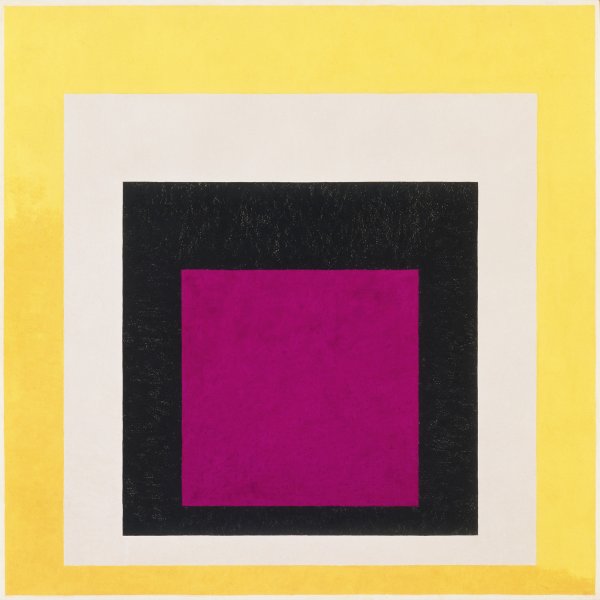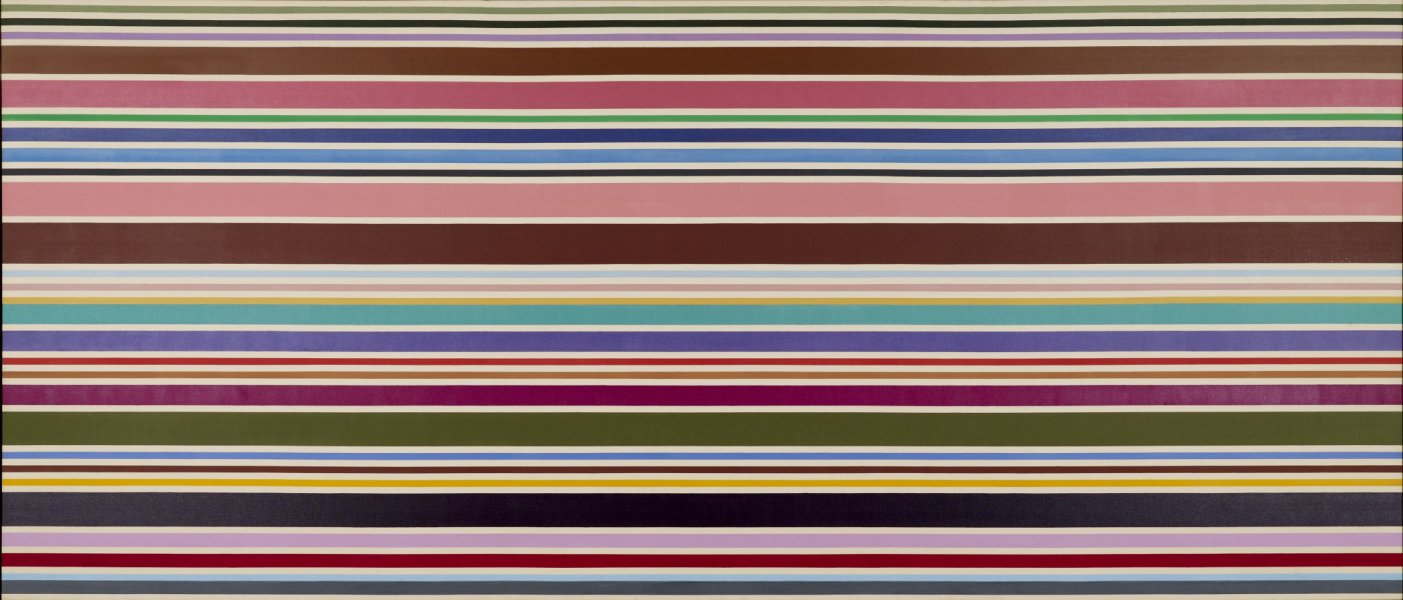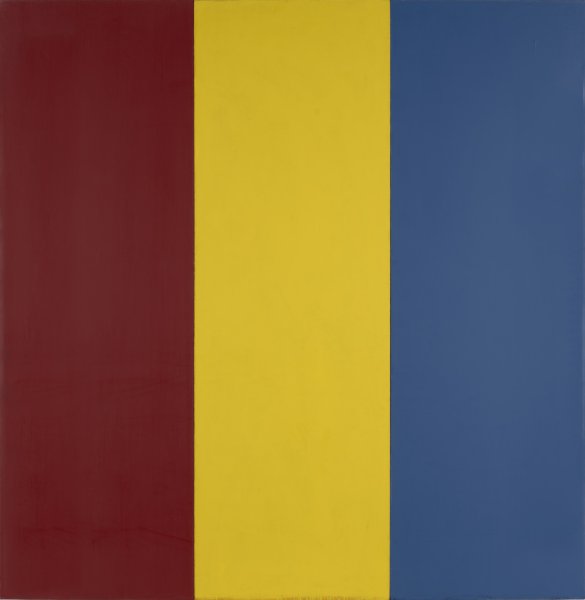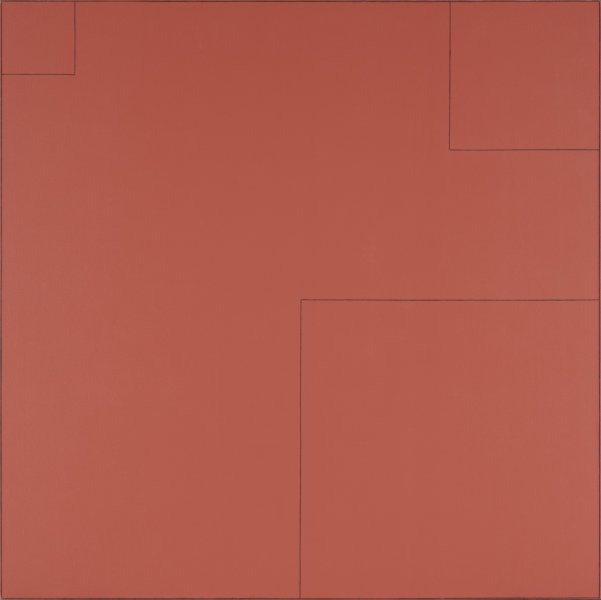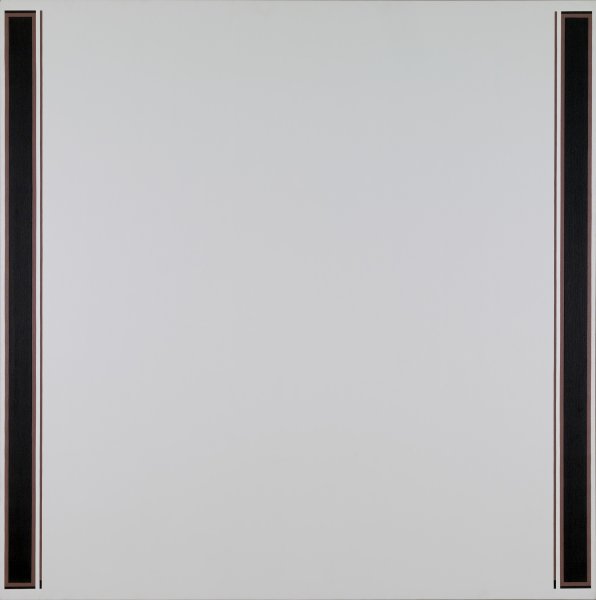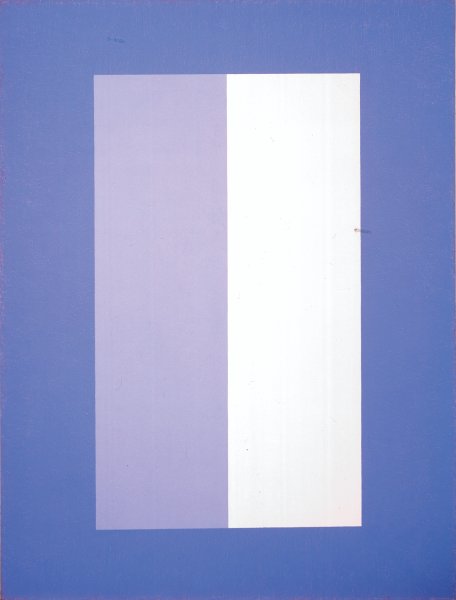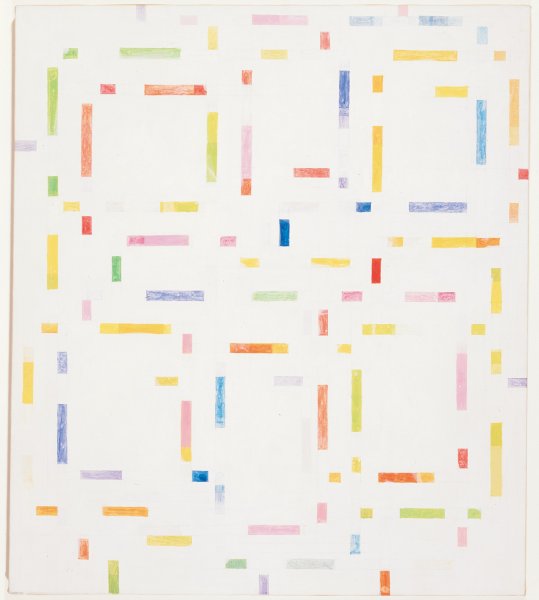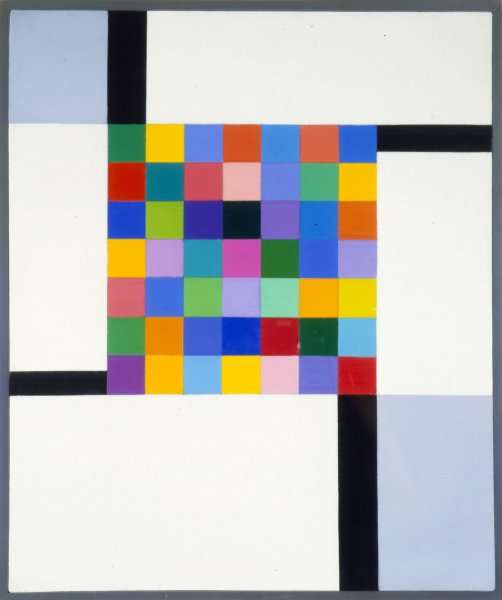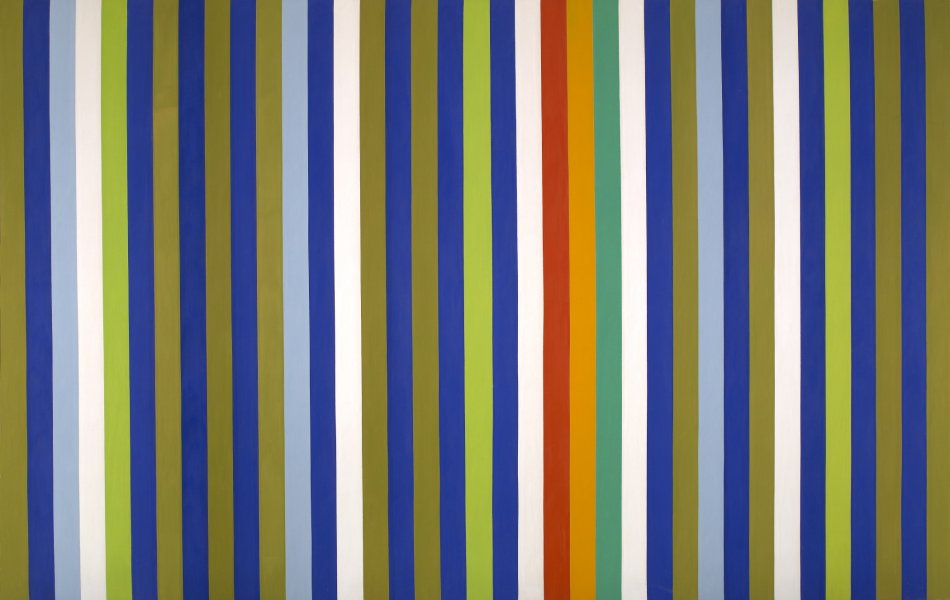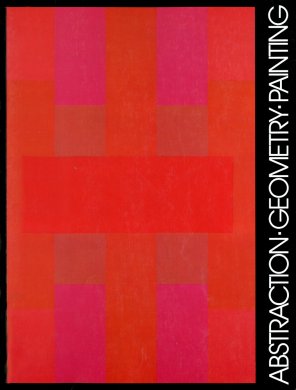Abstraction, Geometry, Painting: Selected Geometric Abstract Painting in America Since 1945
Sunday, September 17, 1989–Sunday, November 5, 1989
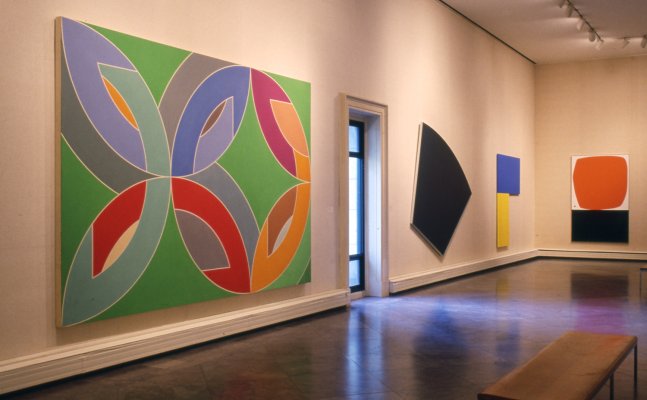
Installation view of Abstraction, Geometry, Painting: Selected Geometric Abstract Painting in America Since 1945. Image courtesy of the Albright-Knox Art Gallery Digital Assets Collection and Archives, Buffalo, New York.
1905 Building
Composed of approximately 55 paintings, the exhibition addressed the broad role of geometric abstraction in postwar American painting. It began with seminal paintings of the mid-1940s by artists associated with the American Abstract Artists, a group that pioneered the development of abstract painting in this country. Among the early works in the exhibition was Burgoyne Diller’s Composition #21, 1945, and paintings by Josef Albers, Ilya Bolotowsky, Fritz Glarner, and Charmion von Wiegand. The 1950s were represented by such early critical works as Ellsworth Kelly’s La Combe III, 1951, and New York, NY, 1957, and Frank Stella’s Jill, 1959, one of his “early black paintings” which is in the Albright-Knox’s collection.
The exhibition also tracked the evolution of geometric abstraction with important works from the 1960s, 1970s, and 1980s by Agnes Martin, Gene Davis, Kenneth Noland, Robert Mangold, Brice Marden, Jo Baer, Peter Halley, and Dorthea Rockburne, among others.
A 232-page catalogue, with an essay by Auping and 55 color illustrations, was co-published with Harry N. Abrams, Inc., New York to accompany the exhibition. Abstraction. Geometry. Painting: Selected Geometric Abstract Paintings in America Sinc 1945 traveled to the Milwaukee Art Museum, Center for the Fine Arts in Miami, and the Yale University Art Gallery in New Haven Connecticut.
This exhibition was organized by Chief Curator Michael Auping.
Exhibition Sponsors
This exhibition was cosponsored by US Air and the WAVe, WBMV 197.7 FM, and was made possible, in part, with public funds from the National Endowment for the Arts and the New York Sate Council on the Arts.
This exhibition was cosponsored by US Air and the WAVe, WBMV 197.7 FM, and was made possible, in part, with public funds from the National Endowment for the Arts and the New York Sate Council on the Arts.
